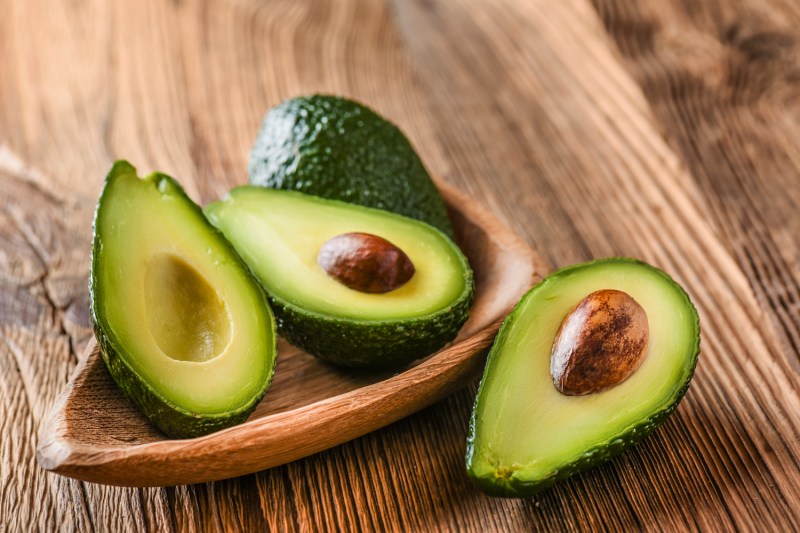
Avocados have earned their way to the top of the food-trend chain by being a powerhouse of nutrients and healthy fats, not to mention their wide culinary range. Although this healthy food is well-loved, avocados have long been misunderstood. Under that tough shell and behind the hard core, they’re really just a soft fruit — yes! — the answer to the question, “Is avocado a fruit?” is yes. An avocado is a fruit! Botanically speaking, avocados are actually large berries.
The first carbon pit-print dates back to the Aztecs in 10,000 B.C. The name “avocado” comes from the Nahuatl language (spoken by the indigenous Nahua people of Mexico) and loosely translates to mean “testicle.” Also known as alligator pears, avocados are native to the warm climates of Central America but now have been spread on the toast the whole world over. This guide will get to the pit of all things Avocado and dig into some facts, figures, and fundamentals of our green supreme.
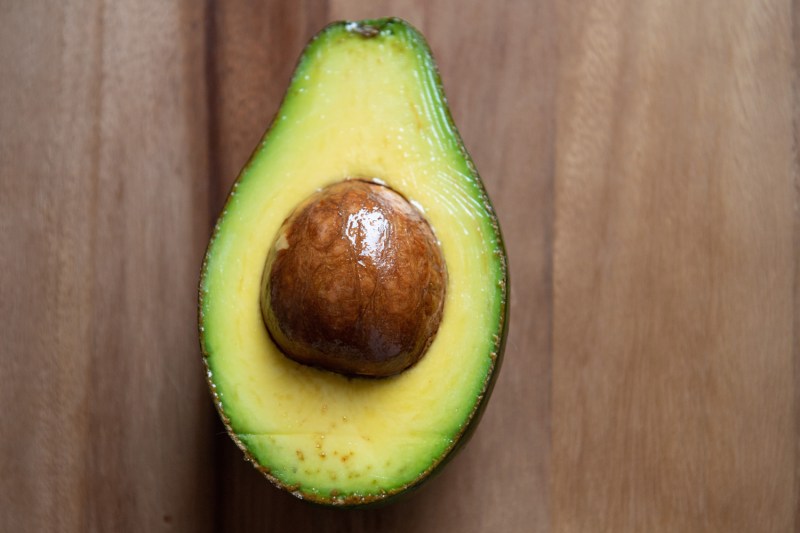
Avocado benefits
Avocados are abundant in minerals, vitamins, and antioxidants and hold the crown when it comes to superfoods.
- Avocados are filled with omega-3 fatty acids and natural vitamin E, which are great for boosting brainpower.
- Avocados are one of the fattiest plant foods in the world but worry not. They’re full of monounsaturated oleic acid, a heart-healthy fatty acid that has been shown to reduce cholesterol and fight heart disease. These are the good fats you want in your diet.
- Avocados are loaded with over 20 different vitamins and minerals.
- Avocados are high in antioxidants like lutein and zeaxanthin, which promote eye health and protect against conditions like cataracts.
- Avocados are filled with fiber. Just one will give you your daily dose of this important nutrient that is good for your metabolism and blood sugar levels.
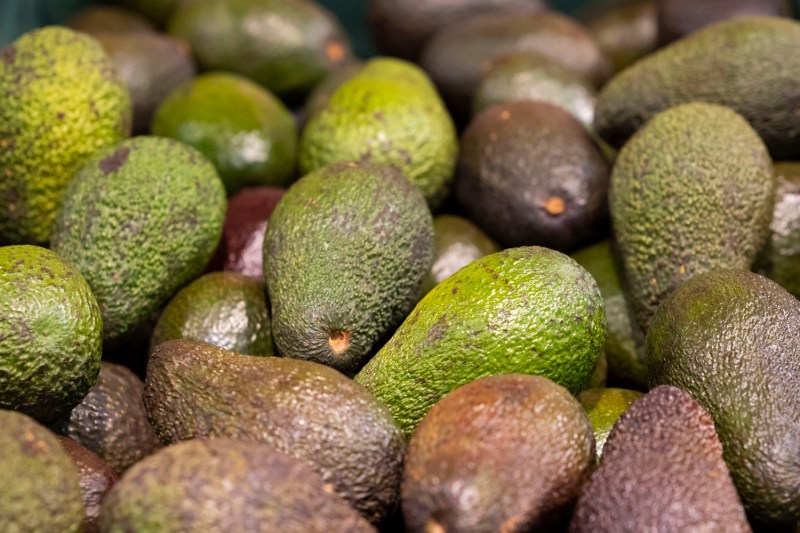
Avocado nutrition
Avocado calories come mostly from fat, with about 22 grams of fat in total (for an average, medium-sized avocado). Each medium-sized avocado contains about 240 calories, which will keep you full and satisfied. Even better, each medium-sized avocado contains about 10 grams of fiber which is also great for keeping you full for longer. Of course, the avocado nutrition facts vary depending on the size of each individual avocado.
The fiber that is found in an avocado is also great for supporting good digestive health. Avocados do contain some protein (about 3 to 4 grams each) but are not considered a primary source of protein.
Of the average 22 grams of fat, about 15 grams of each avocado’s fat content comes from monounsaturated fats. Monounsaturated fats may help lower your LDL cholesterol levels and help reduce your risk of developing heart disease.
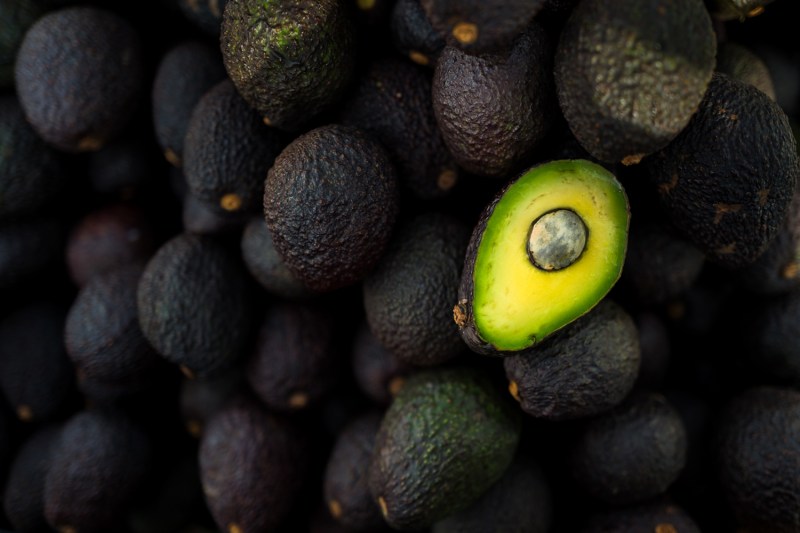
Types of avocados
The typical produce aisle only offers a small glimpse into the avocado options the world has to offer. Avocados come in all sorts of sizes and flavors, and while they may look similar, not every avocado is the same. Check out some of the most common types of avocados below.
Hass
The “Hass” variety is the most popular and common avocado, grown in California. It’s available all year round and has a buttery, nutty flavor and oval shape.
Mexicola grande
Known for its smaller shape and glistening black skin and is slightly sweet and juicy inside. They are in season from August through October.
Fuerte
The Fuerte, which means “strong” in Spanish, is another California favorite. It has a perfect pear shape with a creamy flavor similar to hazelnut and can be found in most seasons.
Choquette
Choquette from Florida is known for being one of the larger avocados. It can weigh up to two pounds and has silky flesh that seems to bleed a lime-green juice when cut.
Bacon
This avocado has a lighter taste than other varieties and is identifiable by its pale yellow-green skin. They are in season from August through October.
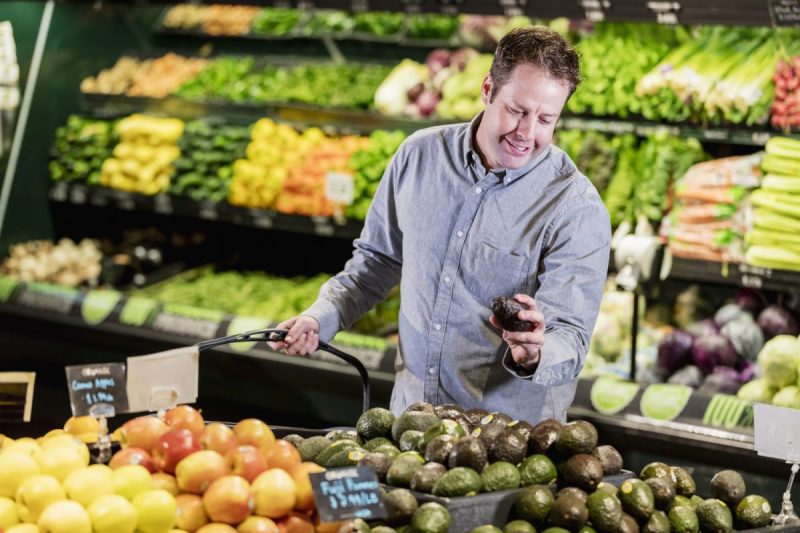
How to shop for the best avocado
Knowing when and where to buy avocados is vital to making sure you are shopping ethically. Buying avocados in season and preferably choosing certified ones is the best way to make sure you are making the most sustainable choice.
Picking the perfect avocado varies by type so the first step is to know what’s in season. Most avocados change from a dark green to a black/brown when ripe, but others may still keep their light green hue.
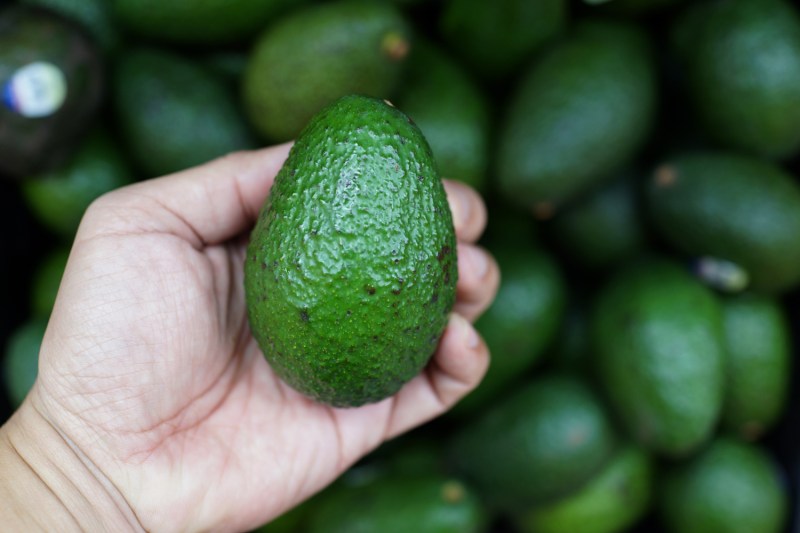
The touch test
By giving the avocado a light squeeze, you should be able to tell its ripeness. It will feel slightly soft but not “mushy” to the touch.
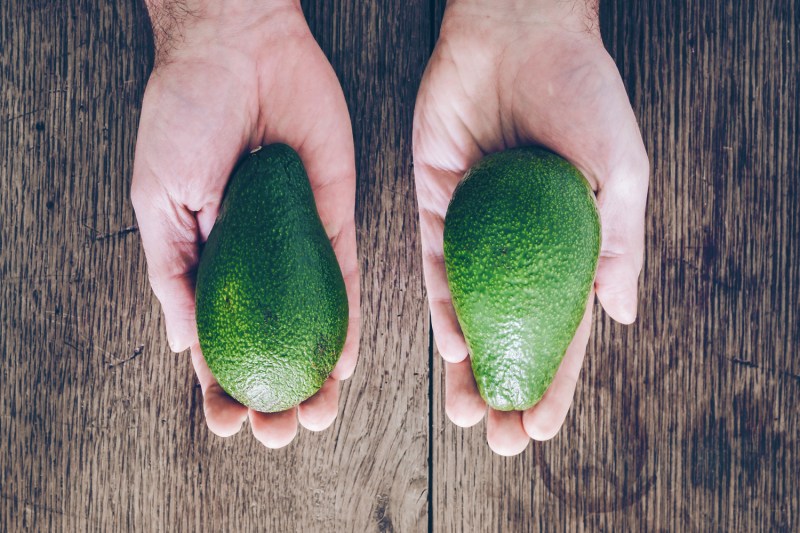
The navel test
Look for the little button on the bottom of your avocado, and if you can pick the naval off easily, it’s ripe and ready to eat!
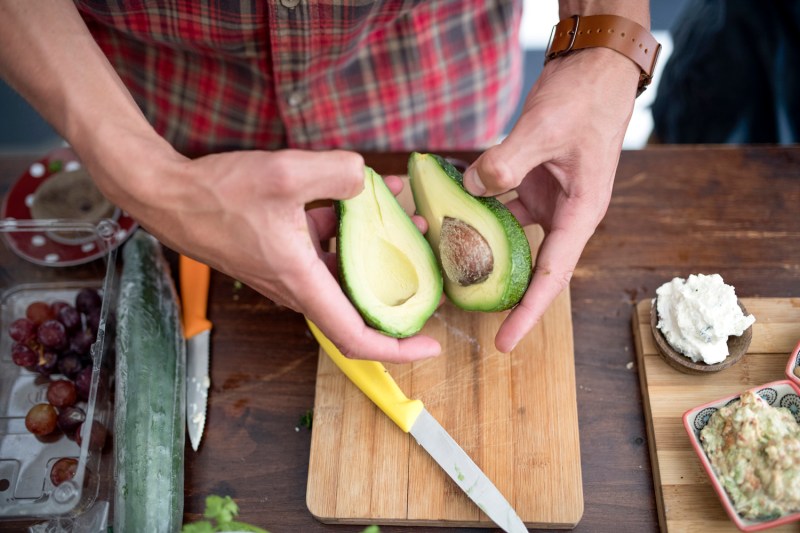
How to cut an avocado
- Place the avocado lengthwise on a secure surface. Place a clean dishtowel on your counter or under your cutting board to prevent slipping.
- Hold the avocado securely with one hand. Slice slowly down the center into the avocado until the knife hits the pit, then rotate the fruit with one hand while keeping the knife steady in the other hand.
- Holding the avocado in the palm of one hand, use your other hand to twist and rotate the two halves apart.
- Place the pit half of the avocado in a towel. Hold it securely in your hand, and then carefully tap the back edge of a chef’s knife into the pit. Twist and then lift straight up to remove. Tap on the side of a bowl to free the pit from the knife.
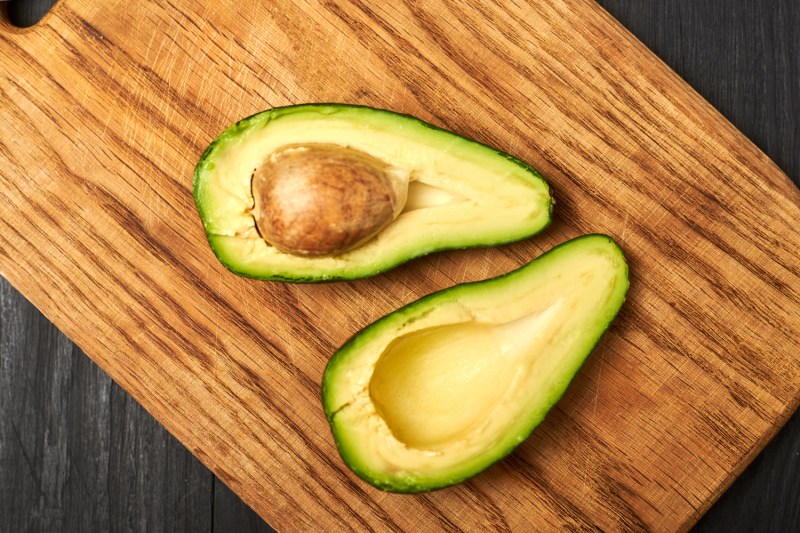
Enjoying an avocado
Once you’ve cut your avocado in half, there are multiple options as to what you can do. If you’re making guacamole or using avocado in a mashed state, you can take a spoon and simply spoon out each half of the fruit. Add some salt, pepper, garlic, or everything bagel seasoning, and enjoy your avocado just like this!
For recipes that require sliced avocado, the avocado can be sliced in multiple ways — sliced with the skin on or the skin can be peeled. To peel the skin, cut each half of the avocado again length-wise. Go to the edge of the skin and gently peel it away. If your avocado has the appropriate level of ripeness, the skin should peel away easily. From there, you can slice the avocado further, mash it, or blend it into a smoothie, or you can savor it as-is.

How to store an avocado
For those rare occasions, here are some tips to save that coveted other half, which ultimately means saving you a lot of money, too.
- Remove the pit and coat the flesh with fresh lemon juice, wrap it in plastic wrap, and place it in the fridge. This should last about two to three days.
- An even easier method is to submerge your ripe avocado in water. Take the other half and place it flesh-side down in a container, cover it, and place it in the refrigerator. This will keep the avocado from turning brown for about another two days.
- If your avocado is already ripe, but you aren’t planning on eating it quite yet, simply place the whole fruit in the refrigerator. This will buy you a few more days of deliciousness.
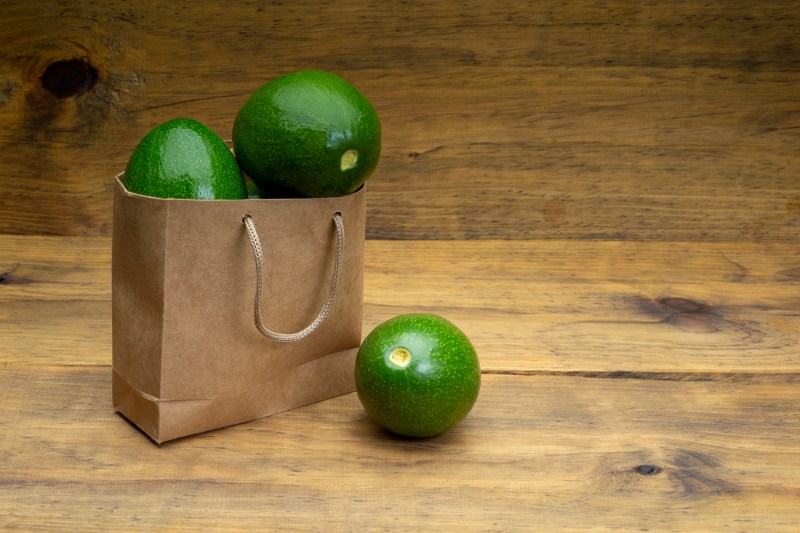
Avocado hacks
How to ripen an avocado fast
Place the avocado in a brown paper bag with another piece of fruit, like an apple or banana. This speeds up the fruit’s production of ethylene gas, which naturally promotes ripening. When sealed and stored at room temperature, this method can soften up the stiffest of avocados in about 1 to 3 days. The more fruit you add, the faster your avocados will ripen. You can also add a small layer of flour to the bag to seal all the gas in.
How to use an overripe avocado
If your avocado is just beginning to brown, you can bring it back to life with a sprinkle of fresh citrus. Recipes like smoothies, dips, dressings, or baked goods are great ways to use an over-ripened avocado. After all, you can’t go wrong with a delicious guacamole recipe. Remember, an avocado will turn brown when exposed to air, but this doesn’t necessarily mean it’s harmful to consume.
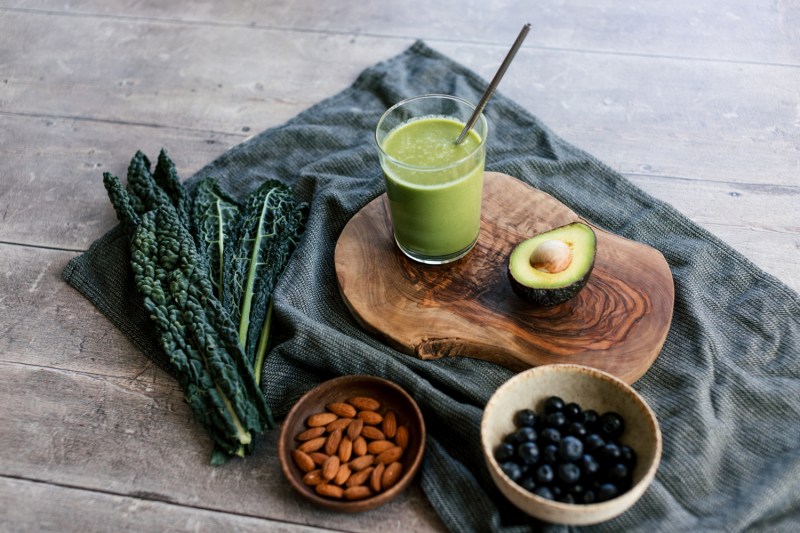
Cooking with avocado oil
Cooking meals with avocado oil also offers great health benefits. Avocado oil is a great oil for high-heat cooking, as it can sustain cooking at ultra-hot temperatures up to around 500 degrees Fahrenheit. Since it has such a high smoke point, this oil is excellent to use as a frying oil for cooking all your favorite dishes. Avocado oil can replace unhealthy cooking oils such as canola oil, which contains trans fats.
Cooking with seed oils, such as canola or soybean oil, contains high amounts of inflammatory fats. That’s why avocado oil is the perfect healthy swap. Avocado oil is often in spray oil forms, too, to make your cooking process even easier.



